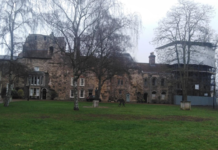‘Just like the others’….Colombian poltergeists and two predictions for researchers
The late Scott Rogo stated in his book The Poltergeist Experience (1979):
All through the study of the poltergeist we have seen how fickle it is. If it is called a demon it readily assumes the role. If it is treated as an intelligent entity, it will rap coherently in answer to questions. Treat it as a witch, and it will give you animal familiars. Apparently, the poltergeist is extremely sensitive to attitudes and beliefs of those witnessing it.”
Rogo’s point is that the poltergeist as a real phenomenon is actually shaped by the time in which it occurs and the beliefs of the humans around it. But the basic patterns remain the same and poltergeists show up around the world, regardless of cultural differences.
There is no parapsychological tradition in Colombia and most material you will find on paranormal topics will be wedged between ‘folclor’ and ‘occultismo’. But on studying these, a mixture of old and new Colombian books and periodicals, I was soon able to discover a wealth of interesting material on stories of ghosts and phantoms. And amid the mostly folkloric accounts of exotic ghosts ‘fantasmas and appariciones’ (‘phantoms’ and ‘apparitions’) interesting material is to be found matching that from the rest of the world.
Despite parapsychology and psychical research having no official or organised presence in the country, by trawling of newspapers, books and archives you can soon establish that Colombians both past and present have been reporting identical manifestations to those across the globe despite not knowing the term poltergeist. So far as Colombian tradition was concerned, culturally specific beliefs attributed such manifestations being attributed to ‘los duendes’. Traditionally, these were non-human spirits like goblins or elves. Like poltergeists in Europe (and everywhere else) ‘los duendes’ were invisible but caused physical effects. They were generally considered more mischievous and annoying than dangerous. Writers often discussed them in amused tones, although it was clear that such manifestations could be far from amusing for those on the receiving end.
In their core manifestations los duendes in Colombia are not just similar to those reported in other parts of the world but strikingly so. Their repertoire of pranks and disturbances was identical to those reported in Europe, and North America ranging stone-throwing as in the case in Popyan to making mysterious noises and starting fires. Los duendes even emulated some of the more obscure tricks, like the knotting of horse tails in rural areas, a phenomenon claimed in older European cases. Others might inflict physical harm as with the mysterious of scratch marks, cuts and writing on the skin of a 16 year-old girl named Eva at Easter 1999 widely reported in the national press, including in El Tiempo, the leading daily national paper.
This striking similarity between accounts has been noted before, as long ago as 1892 by Andrew Lang in Cock Lane and Common Sense (1894) and strikes anyone who is prepared to make a dispassionate assessment of the wealth of material (thousands of cases have been recorded in varying detail over the last two centuries). It clearly demonstrates something is going on, though the nature of what remains disputed and uncertain. At present most of the Europe. But increasingly the world-wide wide and the interconnected ‘global village’ is revealing cases outside this region, on every continent with the exception of Antarctica.
Thus, in the meantime, it is also possible to formulate two predictions. Currently, there are countries which do not feature in lists of poltergeist cases compiled by Western researchers (e.g. Carrington and Fodor, 1951 ; Gauld, 1979; Goss, 1979). However, research into news archives and libraries will turn up examples, and contemporary cases will be found with field work and pro-active local enquiries.
It is further predicted that these accounts will be strikingly similar to those reported in Europe and North America and will correspond to the patterns and characteristics identified by Alan Gauld in a cluster analysis of 500 cases published in 1979 (Gauld 1979).
REFERENCES:
Carrington, Hereward & Fodor, Nandor (1951)Haunted People: The Story of the Poltergeist Down the Centuries. New York. Dutton.
Gauld, Alan & Cornell A.D. Poltergeists (1979).UK. Routledge Kegan Paul.
Goss, Michael, (1979) Poltergeists: An annotated bibliography of Works in English, circa 1880-1975. New York. Scarecrow Press.




